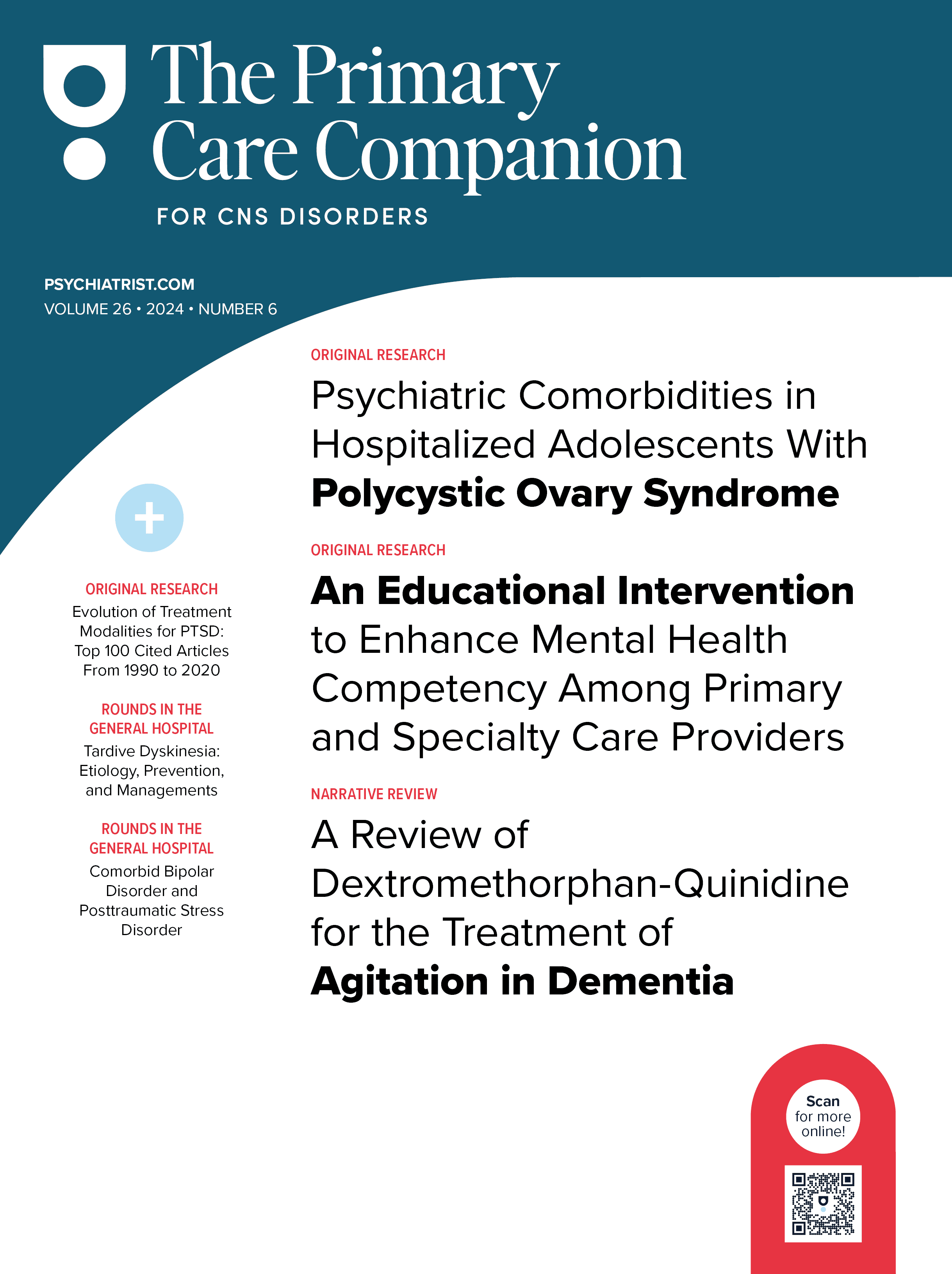Background: Mirtazapine, a noradrenergic and specific serotonergic antidepressant (NaSSA), is characterized by a unique receptor-specific pharmacologic profile and tolerable side-effect profile in comparison to other antidepressants. It has been reported to have a low incidence of agitation, anxiety, and insomnia, which may be due to blockade of 5-HT2 and 5-HT3 receptors. This unique multireceptor-mediated clinical pharmacologic profile may reduce the need for polypharmacy in selected patients.
Case reports: Three cases are presented. In case 1, mirtazapine was able to rapidly treat anxiety and agitation in a 90-year-old woman. This was confirmed with 3 consecutive challenges with mirtazapine. In case 2, both a mood disorder and insomnia were successfully treated with rapid resolution in a patient by using mirtazapine. In case 3, the patient experienced sexual dysfunction while receiving sertraline and developed insomnia with the addition of bupropion. The addition of mirtazapine and the discontinuation of sertraline and bupropion resolved the sexual dysfunction and insomnia. Polypharmacy interventions were decreased in these patients through receptor-specific events from mirtazapine.
Conclusion: The new antidepressant mirtazapine appears to be an effective strategy for treating anxiety, agitation, and insomnia and for diminishing SSRI-related sexual dysfunction without compromising the patient’s therapeutic response to the medication while decreasing the need for additional pharmacotherapies. More than 70% of patients with major depression will have anxiety symptoms. The 5-HT2 receptor seems to play a major role in the regulation of anxiety. The anxiolytic properties of mirtazapine may be due to its antagonism of 5-HT2 receptors and can appear as early as the first week of treatment.
This PDF is free for all visitors!
Save
Cite




